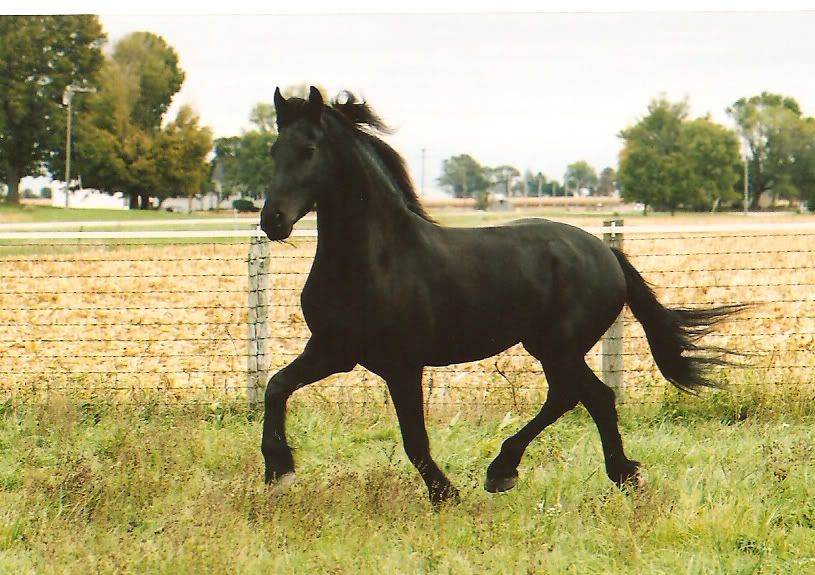Post by linda on Feb 28, 2009 11:29:15 GMT -5
This formula is for a LJ with long (17 inch) billets and is designed so that you can easily get the girth started on the holes and yet the girth will be short enough so the buckles do not end up under your calf.
If you cinch your girths up really tight or if you use lots of padding, you may need to adjust accordingly. But, this should get you a starting point. It is frustrating when your new LJ is delivered and you don't have a girth the right length to get you that first ride.
Measure the circumference of the horse where the girth of the LJ will lay. This will usually be just behind the withers and may incline forward a little towards the girth channel on some horses.
Let's say that your horse measures 73 inches in circumference. Subtract 40 inches from that number (73-40) to get the longest girth you can probably use and still not have the buckles under your calf. That would be a 33 inch dressage girth.
To find the shortest girth that you can probably use and not have a difficult time getting the girth started on the billets, subtract 46 from the circumference (73-46) and you end up with a 27 inch girth.
If your horse measures 73 inches in circumference:
73-40=33 inch girth (longest girth)
73-46= 27 inch girth (shortest girth)
If your horse measures 78 inches in circumference:
78-40 = 38 inch girth (longest girth)
78-46 = 32 inch girth (shortest girth)
Please note once more that this is only a starting place. With an individual horse, different girth tightness and different pads, your perfect girth length (or range of lengths) may vary some from these calculations. It should also be noted that these calculations are for girths without much stretch--such as a Professional Choice Dressage Girth or a Wintec Dressage Girth. If you buy a dressage-style girth that has a lot of stretch in it (and some do), well, those buckles can end up under your calf unless you start with a much shorter girth.
Dressage girths only come as long as 38 inches. You want a dressage girth (IMHO) because there are keepers for the extra billet material and because the padding next to the horse is extended under the buckles--more comfortable for the horse.
If your horse girths so large that you can't use a dressage girth, then I would suggest having your LJ made with even longer billets. You can always shorten them, but the LJ has to be sent back to the factory and re-sewn in order to lengthen them.
If this formula would make you buy a dressage girth shorter than they make, then you probably need the shorter billets.
I measured the length of my "long" billets from where they come out of the nylon to the end of the billet tip. For reference, that length is 17 inches.
If you cinch your girths up really tight or if you use lots of padding, you may need to adjust accordingly. But, this should get you a starting point. It is frustrating when your new LJ is delivered and you don't have a girth the right length to get you that first ride.
Measure the circumference of the horse where the girth of the LJ will lay. This will usually be just behind the withers and may incline forward a little towards the girth channel on some horses.
Let's say that your horse measures 73 inches in circumference. Subtract 40 inches from that number (73-40) to get the longest girth you can probably use and still not have the buckles under your calf. That would be a 33 inch dressage girth.
To find the shortest girth that you can probably use and not have a difficult time getting the girth started on the billets, subtract 46 from the circumference (73-46) and you end up with a 27 inch girth.
If your horse measures 73 inches in circumference:
73-40=33 inch girth (longest girth)
73-46= 27 inch girth (shortest girth)
If your horse measures 78 inches in circumference:
78-40 = 38 inch girth (longest girth)
78-46 = 32 inch girth (shortest girth)
Please note once more that this is only a starting place. With an individual horse, different girth tightness and different pads, your perfect girth length (or range of lengths) may vary some from these calculations. It should also be noted that these calculations are for girths without much stretch--such as a Professional Choice Dressage Girth or a Wintec Dressage Girth. If you buy a dressage-style girth that has a lot of stretch in it (and some do), well, those buckles can end up under your calf unless you start with a much shorter girth.
Dressage girths only come as long as 38 inches. You want a dressage girth (IMHO) because there are keepers for the extra billet material and because the padding next to the horse is extended under the buckles--more comfortable for the horse.
If your horse girths so large that you can't use a dressage girth, then I would suggest having your LJ made with even longer billets. You can always shorten them, but the LJ has to be sent back to the factory and re-sewn in order to lengthen them.
If this formula would make you buy a dressage girth shorter than they make, then you probably need the shorter billets.
I measured the length of my "long" billets from where they come out of the nylon to the end of the billet tip. For reference, that length is 17 inches.

